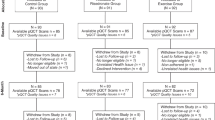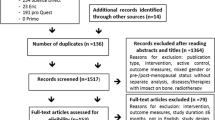Abstract
Evaluation of bone mineral content/bone mass density (BMC/BMD) is important to determine bone mass development among adolescents in health and disease. It is uncertain at which skeletal site BMC/BMD is best predicted by bone mass determinants. On the other hand, intrapersonal BMC/BMD data can be clustered into a composite index score to facilitate correlation and outcome prediction analysis. This study aimed to identify the skeletal site that was best predicted by bone mass determinants and to develop a composite index score based on multisite BMC/BMD values in healthy adolescent girls. Eleven BMD/BMC variables per subject were evaluated by using dual-energy X-ray absorptiometry (DXA) and peripheral quantitative computed tomography (pQCT) in 236 healthy girls aged 12–15 years. Bone mass determinants, namely, weight, height, puberty, dietary calcium, physical activity, and bone turnover markers, were determined. Factor analysis was used to develop composite index scores that summarized characteristics of multisite BMC/BMD. Results showed that lumbar spinal BMD and BMC (by DXA) and tibial integral BMD (by pQCT) were the BMC/BMD sites better predicted by bone mass determinants (R 2, 0.57–0.77) in multiple regression analysis. On the other hand, three composite index scores representing areal BMD, areal BMC, and vBMD were derived to summarize the original BMC/BMD values. The composite index scores had similar predicting power (R 2, 0.419–0.749) compared to those of original BMC/BMD, indicating that the composite index scores were representative of the original variables. To conclude, lumbar spinal BMD and BMC and tibial integral BMD were the three BMC/BMD variables better predicted by bone mass determinants. This evaluation would help select appropriate skeletal sites as outcome measures for bone mass evaluation in future studies. Also, the development of composite index scores could help reduce the number of variables for correlation and outcome prediction analyses.
Similar content being viewed by others
Author information
Authors and Affiliations
Corresponding author
About this article
Cite this article
Lee, W., Cheung, A., Lau, J. et al. Bone densitometry: which skeletal sites are best predicted by bone mass determinants?. J Bone Miner Metab 22, 447–455 (2004). https://doi.org/10.1007/s00774-004-0506-2
Received:
Accepted:
Issue Date:
DOI: https://doi.org/10.1007/s00774-004-0506-2




